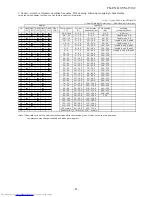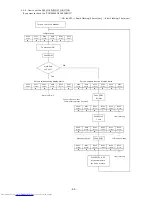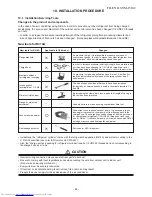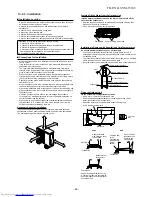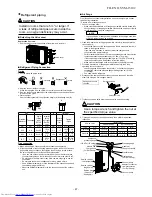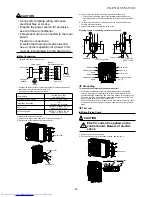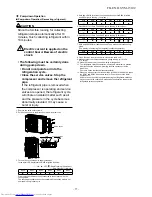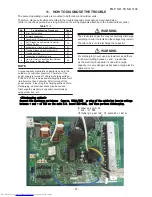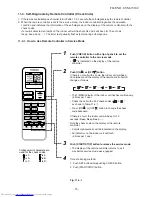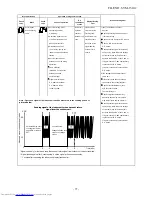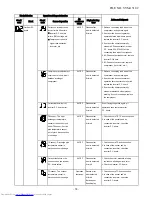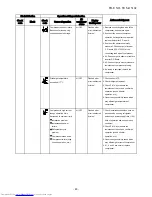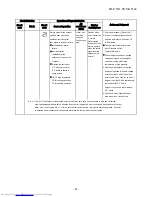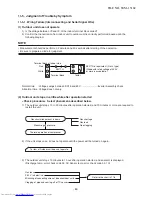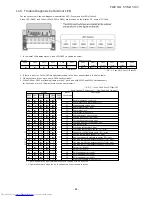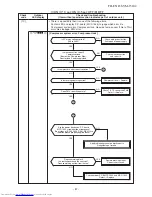
11. HOW TO DIAGNOSE THE TROUBLE
The pulse modulating circuits are mounted to both indoor and outdoor units.
Therefore, diagnose troubles according to the trouble diagnosis procedure as described below.
(Refer to the check points in servicing written on the wiring diagrams attached to the indoor/outdoor units.)
NOTE
A large-capacity electrolytic capacitor is used in the
outdoor unit controller (inverter). Therefore, if the
power supply is turned off, charge (charging voltage
DC280V to 373V) remains and discharging takes a lot of
time (for more than 5 minutes). After turning off the
power source, if touching the charging section before
discharging, an electrical shock may be caused.
Discharge the electrolytic capacitor completely by
using solder iron, etc.
WARNING
The electrolytic capacitor may not normally discharge
according to error contents and the voltage may remain.
Therefore, be sure to discharge the capacitor.
WARNING
For discharging, never use a screwdriver and others
for short-circuiting b and – electrodes,
As the electrolytic capacitor is one with a large
capacity, it is very dangerous because a large electric
spark will occur.
Table 11-1
No.
1
2
3
4
5
6
7
8
9
Troubleshooting Procedure
First Confirmation
Primary Judgment
Judgment by Flashing LED of Indoor Unit
Self-Diagnosis by Remote Controller
(Check Code)
Judgment of Trouble by Symptom
Trouble Diagnosis by Outdoor LED
Troubleshooting
Inspection of the Main Parts
How to Simply Judge Whether Outdoor
Fan Motor is Good or Bad
Page
72
73
73
74
81
83
91
93
94
<
Discharging method
>
Connect the discharge resistance
(
approx. 100
Ω
/40W
)
or plug of the soldering iron to voltage
b and - of C08 on the main P.C. board MCC-1645, and then perform discharging.
Discharge position
+ and – of C08
(Discharging period: 10 seconds or more)
- 7
2
-
FILE NO. SVM-15102
Summary of Contents for RAS-2M14S3AV-E
Page 31: ...4 1 Outdoor Unit 4 CONSTRUCTION VIEWS FILE NO SVM 15102 31 Unit mm ...
Page 116: ......




